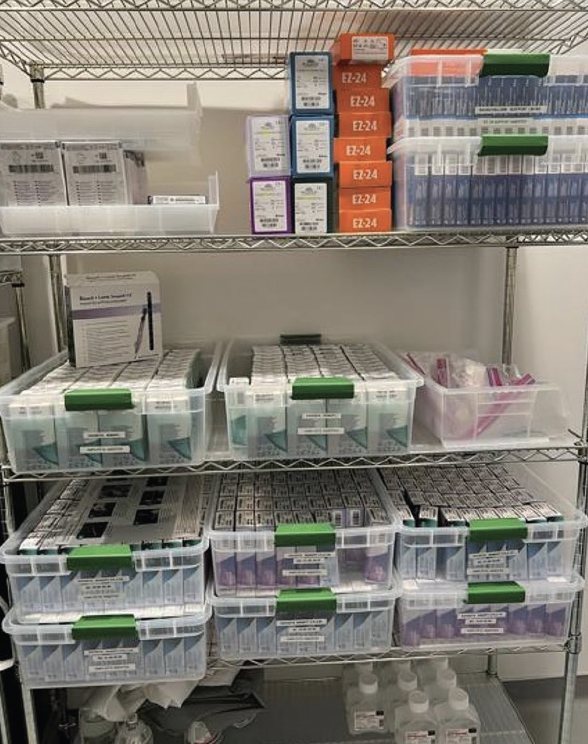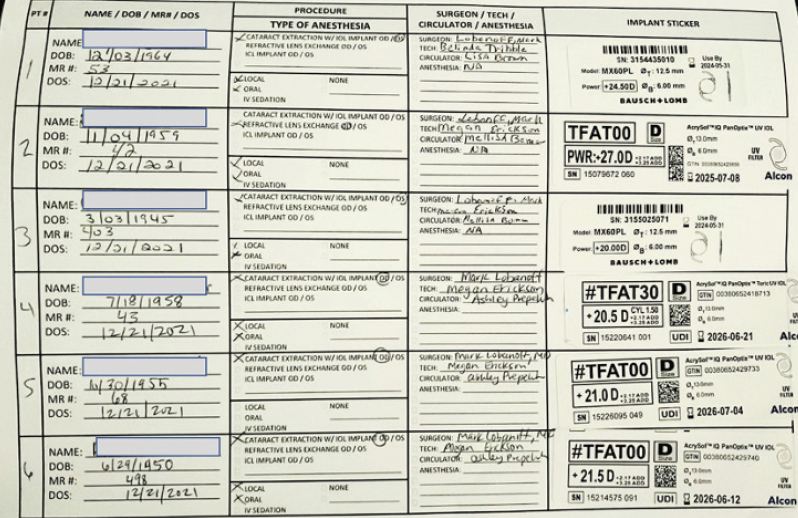
Most ophthalmologists’ workdays are filled with clinic patients and surgery schedules. IOL inventory is an afterthought—until the IOL required for surgery is not available. How can technology help?
MANAGING INVENTORY
Most ophthalmologists perform surgery in an ambulatory surgery center (ASC) and/or an in-office OR. In both settings, a high volume of cataract surgery is performed at a rapid pace. Efficiency is at a premium, and the OR must manage its inventory well. Two main considerations affect a center’s ability to manage its inventory.
No. 1: The nature of consignment. A consignment of IOLs must be ready at a moment’s notice (Figure 1). The word consignment here refers to a collection of IOLs of various powers that is stored at the ASC or in-office OR, with the facility paying the IOL manufacturer as each lens is used. The benefits of this arrangement for the facility are that (1) the IOL inventory does not have to be purchased up front and (2) IOLs are replaced at no charge if they expire. The downside is that daily interaction with vendors is required to pay for IOLs as they are used.

Figure 1. A small consignment of lenses.
No. 2: The burden on staff. A large ASC may stock thousands of IOLs from multiple vendors. The same can be true on a slightly smaller scale for large in-office ORs. In both settings, all implanted lenses must be tracked carefully, and billing must be cross-checked daily against supply. Weekly inventory checks are required as well. Busy ASCs and in-office ORs may assign a full-time staff member to handle billing and inventory management—generally a thankless job (Figure 2). Celeste Moore is a senior clinical director for Amsurg, one of the largest ASC management companies in the country. She told me, “IOL inventory management is a complex and labor-intensive task. Staff naturally places a high value on direct patient care. This job takes them away from that. We would often have to pay our staff members extra just to take on the task.”

Figure 2. The (not so) good old days of manual IOL inventory management.
Another issue is that surgeons often submit their lens choices to a surgery center only days before surgery even though many of the preoperative clinic visits took place weeks ago. Why the delay? A surgery coordinator or technician first must print out every patient’s measurement data from the diagnostic devices in the clinic. The data are then entered manually into a software program that contains IOL formulas. The result is printed along with the patient’s clinic notes and placed on the surgeon’s desk. Next, the surgeon chooses the spherical power of the IOL. If a toric IOL was selected, the data are entered into yet another online calculator to determine the toric power and IOL alignment required. Because the process is onerous, it is often postponed. Last-minute lens orders, however, necessitate overnight shipping from the manufacturer if the lenses requested are not present in the current IOL inventory. Overnight shipping can be expensive, and the OR staff must track last-minute orders carefully to ensure that the IOLs are at the facility for the cases.
INCREASING EFFICIENCY
Technology can help increase efficiency and make the process of stocking and ordering IOLs more user-friendly. Software systems such as Veracity (Carl Zeiss Meditec) and the forthcoming Digital Health Suite (Alcon) and EyeTelligence platform (Bausch + Lomb) pull diagnostic data directly from devices such as the Lenstar (Haag-Streit) and IOLMaster (Carl Zeiss Meditec) into the cloud. The systems then autopopulate the data into IOL formulas. Both spherical and toric calculators are present in one place, which eliminates duplicate data entry for specialty IOLs. Not only does this increase efficiency, but it also prevents transcription errors. The hope is that, because the process is faster, easier, and more accurate, IOL orders will be placed weeks before surgery and overnight deliveries will be eliminated.
Web-based barcode-enabled software systems from companies such as McKesson Medical-Surgical and Simplify can help surgical facilities place supply orders, track products, and identify purchasing trends. These systems can order IOLs directly from the manufacturers as the IOLs are being used, and they can ensure accurate billing. EyeTelligence will go one step further by bridging the gap between cloud-based IOL calculation platforms and OR inventory management systems. When a surgeon chooses an IOL, EyeTelligence will check the inventory in the OR and determine if an IOL of that power, make, and model is present. If not, the system will order the IOL.
CONCLUSION
An efficient IOL inventory management system can save surgery facilities—both ASCs and in-office ORs—money. Managing inventory is becoming increasingly complex with the addition of more IOL models. Now is the time to consider adopting this powerful and novel technology to increase efficiency and reduce the burden on staff.




